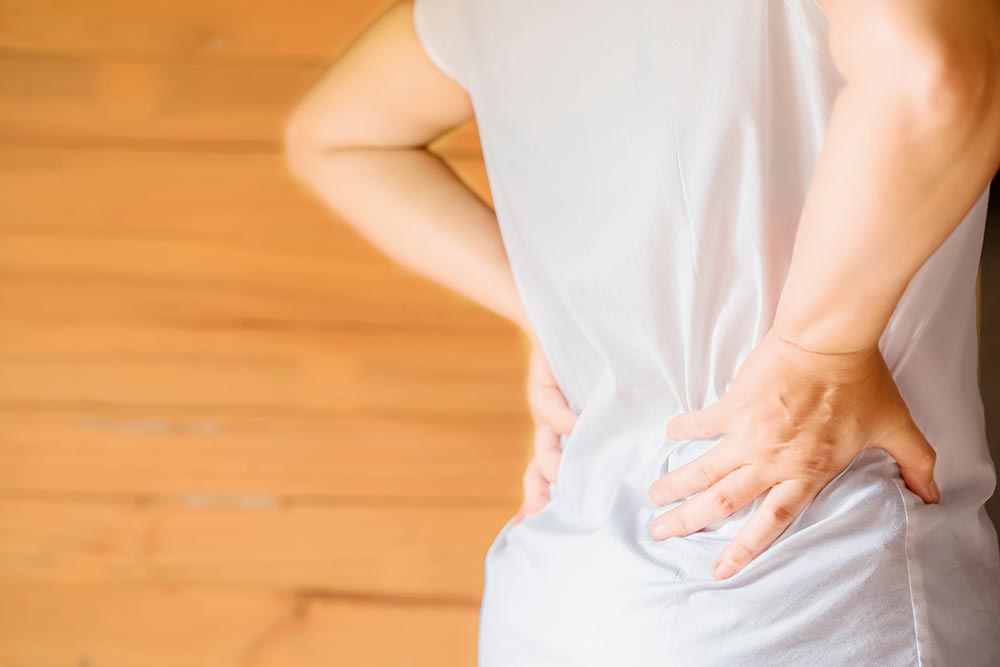Table of Contents
Overview of Back Pain
Back pain is not a disease. It is a symptom. As a symptom, it can be caused by many different things. The most common causes are muscle or joint problems and injuries to the bones, discs and ligaments in your back.
Back pain may be sudden and severe or gradual and mild, but it is always distressing because it interrupts your daily life. The pain will usually be worse when you move or bend over. You may also have trouble sleeping because of the discomfort.
Your back has many bones (vertebrae), disks, muscles and ligaments that work together to help you stand up straight and protect your spinal cord — which carries messages between your brain and body — from injury. Back problems can occur anywhere along this complex structure.
Understanding the Anatomy of the Back
The anatomy of the back can be broken down into three sections: the cervical spine, thoracic spine and lumbar spine.
The Cervical Spine
The cervical spine, or neck, is made up of seven vertebrae. These bones are separated by discs and ligaments that allow flexibility while maintaining stability. The cervical vertebrae are connected to each other by ligaments called facet joints that allow for movement between each bone. The facet joints also help transfer pressure from one bone to another during movement.
The Thoracic Spine
Located between the cervical and lumbar spines, the thoracic spine consists of 12 vertebrae that form the base of your rib cage and upper back. Each thoracic vertebra has a pair of ribs attached on either side of it. This allows for movement in multiple directions as well as rotation around your trunk’s center axis. The least amount of motion occurs between each vertebra due to tight ligaments called interspinous ligaments that connect them together tightly. These ligaments also help transfer pressure from one bone to another during movement so that one does not bear more stress than it can handle at any given time.
Lumbar spine
The lumbar spine is the lower part of the spine, located between the thoracic spine (upper back) and the sacrum (base of the spine). The lumbar vertebrae are broader than those in the thoracic and cervical regions. They carry most of the body’s weight.
Lumbar vertebrae have a wedge-shaped body and sloping articular processes (joint processes) that articulate with one another. They allow for flexibility and mobility.
Sacrum and coccyx
The sacrum is a five-sided bone that is joined to the pelvis by ligaments. The sacrum connects with the coccyx (tailbone) at the bottom of the spine.
The sacrum and coccyx are referred to as the pelvic girdle because they support many of the body’s internal organs, including the bladder, uterus, bowels and rectum. These bones also help support your lower back.
Who Gets Back Pain?
Back pain is one of the most common reasons people visit the doctor. It’s also one of the most common reasons people miss work.
About 80 percent of adults experience back pain at some point in their lives, according to the National Institutes of Health. That works out to about 80 million Americans per year. And that’s just adults. More than half of all children experience back pain at some point, too.
Types of Back Pain
The following are some common types of back pain:
Muscle strain or sprain — Muscle strains and sprains are caused by overuse or trauma to a muscle or tendon in the back or neck (muscles are tissues that help us move; tendons connect muscles to bone). These injuries often occur during exercise, sports, or other physical activity.
Spinal stenosis — Spinal stenosis occurs when the spinal canal narrows and compresses nerves inside it. This can cause numbness or weakness in the arms and legs.
Disc herniation — Disc herniation occurs when the soft center (nucleus pulposus) of one vertebra bulges out through a tear in its outer covering (annulus fibrosis). This causes compression on nearby nerves, which may produce numbness, weakness, tingling, burning sensation, and/or bowel/bladder problems.
Symptoms of Back Pain
Back pain usually stems from an injury or a medical condition. However, sometimes there are no clear reasons for back pain.
The following are some symptoms of back pain:
- A dull ache in the lower back
- Sharp shooting pains that travel up to your neck or shoulders
- Pain that worsens with movement, such as bending over or turning around
- Tingling or numbness in your legs and feet
Causes of Back Pain
The most common causes of back pain include:
Disc degeneration. As you age, your intervertebral discs lose some of their ability to absorb shock from everyday motions. This contributes to the development of disc degeneration and spinal osteoarthritis (wear-and-tear arthritis).
Spinal stenosis. The spinal canal narrows as vertebrae fuse together. This may cause compression on the spinal cord or nerves in the spinal canal.
Facet joint dysfunction/spondylolisthesis. Facet joints are located at each corner of each vertebra in your spine, where two vertebrae meet. Spondylolisthesis occurs when one vertebra slips forward over another (usually because one facet joint is damaged). These conditions may cause narrowing or weakness in the facet joint area, leading to irritation or inflammation around the nerve roots (radiculopathy).
Herniated disc (herniated nucleus pulposus). A herniated disc is when part of a soft gel-like substance called nucleus.

